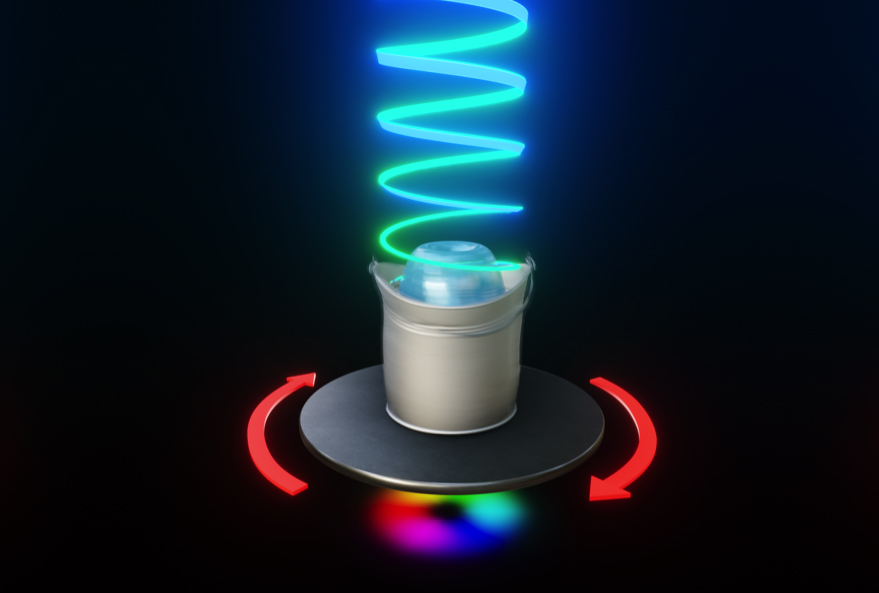Researchers from Skoltech, the University of Southampton, and the University of Iceland have created quantum vortices in a rotating bucket of liquid light after overcoming a long-standing experimental hurdle. The study is reported in a recent article in Science Advances and goes back in part to Newton’s rotating bucket experiment: When a bucket of water is set to spin, the fluid forms a spiraling vortex at its center, much like bath water running down the drain. However, everything changes when superfluids — such as liquid helium and atomic Bose-Einstein condensates — are involved, since they are frictionless. When a superfluid is stirred, instead of forming one spiraling vortex like a classical liquid would, above some critical rotation frequency, multiple quantized vortices are created. Interestingly, faster rotation produces more vortices.
In the case of liquid light (otherwise known as a polariton condensate), which is the result of strong coupling between light and matter (photons and excitons) at cryogenic temperatures, the fluid is instead contained within a “bucket” made from a laser emission. Suddenly, when that laser beam imitating a bucket rotates, the polariton condensate in it also rotates, and above some critical rotation frequency a quantum vortex appears at the center of the fluid.
Until now, creating such a vortex has been prohibited by limitations on the rotation speed of the bucket. Due to the fundamental dynamics of liquid light, a bucket rotating at a gigahertz frequency is required to induce a quantum vortex in the polariton condensate. This, however, is many orders of magnitude faster than the lab equipment typically used to shape a laser beam, which has a maximum update rate well below 100 Hz.
Skoltech PhD student Ivan Gnusov designed an optical setup to overcome this limitation. The apparatus was built in Skoltech’s Hybrid Photonics Laboratory, led by Professor Pavlos Lagoudakis. The approach used relies on two laser beams with a slight difference in energy. Combining them results in a beating note profile rotating in accordance with their energy difference.
Schematic of the experimental optical setup created at Skoltech. Two energy-detuned laser beams, each shaped with a spatial light modulator, are recombined to make a fast-rotating beam profile. Credit: Ivan Gnusov et al./Science Advances
With the implementation of this experimental technique carried out by Gnusov alongside Skoltech Research Scientist Sergey Alyatkin and Junior Research Scientist Kirill Sitnik, quantized vortices were formed within liquid light over a window of rotation frequencies, where their rotation direction coincides with the bucket. Therefore, the liquid light is literally stirred with the laser light. These experimental findings are backed by a numerical simulation and theory provided by external collaborators.
Vortices in polariton condensates appear in a narrow range of stirring frequencies from 1 to 4 GHz. This critical frequency is more than a billion times higher than for superfluid helium and 10 million times faster than for atomic Bose-Einstein condensates.
Not only is this an amazing realization of the fundamental physics of liquid light, but it also opens the door to studies of the superfluidity of polariton condensates on a par with other superfluids. Additionally, this work further demonstrates deterministic, all-optical control over structured nonlinear light-based fluids and opens the possibility of deterministic vortex generation. Moreover, utilization of fast-modulating light for polaritons can result in a whole new research direction in the field of polaritonics.
Want more from the Hybrid Photonics Laboratory? Head over to its website for more publications, to check out the polaritonics seminar series, or to meet the team.
The experimental work of this project was supported by the Russian Foundation for Basic Research, Grant No. 20-52-12026.
Contact information:
Skoltech Communications
+7 (495) 280 14 81


